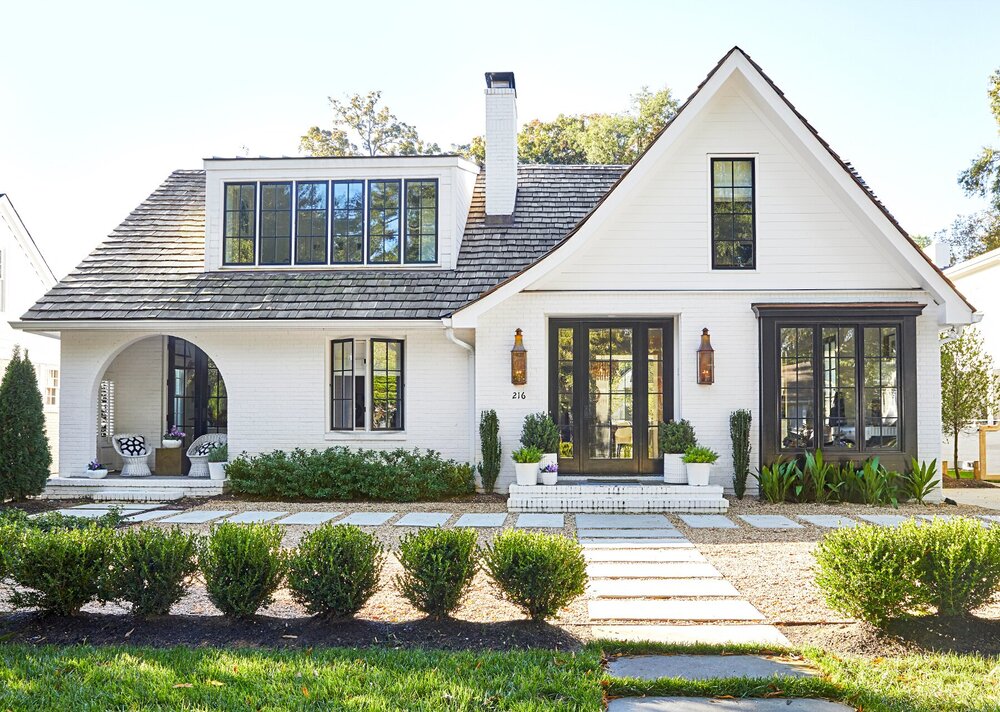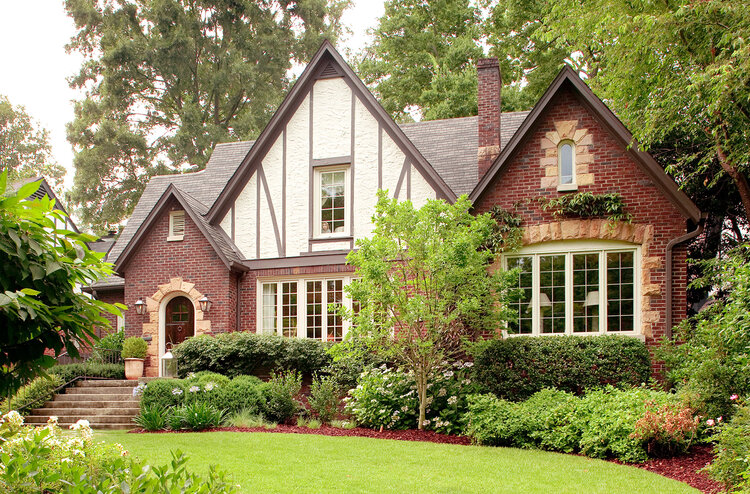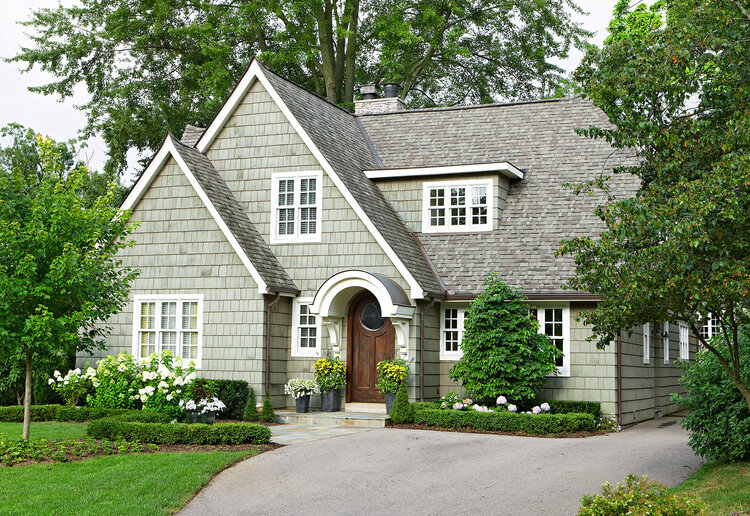
What Style is Your House?
Whether you’re remodeling, adding a second level, or just giving your home some extra curb appeal, knowing the style of your house can help you develop a successful plan. You’ll also gain a greater appreciation of the way your house was designed and built.
This guide to house styles will help you understand the many variations within the different designs. You can also find architecture guides at your local library or in larger bookstores that will help you identify a particular style or design. Using the original style of your house as a starting point for an exterior makeover is usually the best technique, but, in some cases, mixing styles can energize a design.
Cape Cod Homes

Country French-Style Homes

Country French homes are often one story with many narrow windows and paired shutters, steeply pitched roofs (either hipped or side-gabled), stucco walls, and a half-timbered frame. The curb appeal really stands out and often feature stunning driveways and landscape designs.
Colonial-Style Homes
Colonials are easy to add on to at the side or the back. A brick facade may be difficult to match, but a builder or designer can help you find complementary siding materials. Search online for reproduction Colonial-style materials, such as divided-light windows, to help you make a smooth exterior transition.

Victorian Houses

Victorian homes often feature a steeply pitched roof, a dominant front-facing gable, patterned shingles, cutaway bay windows, and an asymmetrical facade with a partial or full-width front porch.
Tudor-Style Houses
Common features of Tudor-style homes include a steeply pitched roof, prominent cross gables, decorative half-timbering, and tall, narrow windows with small windowpanes.

Play Up Tudor Style
No matter what house style you have, it’s all about the curb appeal. Watch and learn how to enhance your home’s elegant Tudor style using these signature exterior details. Use these ideas to play up the different materials, colors, and textures found in Tudor-style homes.
Craftsman Houses

As for the exterior, Craftsman-style homes often have low-pitched roofs with wide eave overhangs, exposed roof rafters, decorative beams or braces under gables, and porches framed by tapered square columns. Craftsman bungalows often have unfinished but usable space in the attic that can offer great renovation opportunities.
Add Craftsman Style
Craftsman-style homes hold a lot of potential. See how to play up your home’s charming Craftsman aesthetic with these curb appeal ideas. Your large patio and front yard will look better than ever.
Cottage-Style Homes
Common features of cottage style house plans include a warm, storybook character, steep roof pitches and cross gables, arched doors, casement windows with small panes, and brick, stone, or stucco siding.

Mediterranean-Style Houses

Mediterranean-style homes often feature a low-pitched red tile roof, arches, grillwork, and a stucco or adobe exterior. The typical U-shape Mediterranean floor plan is oriented around a central courtyard and fountain, making the garden an extension of the living space. Rooms open to the courtyard, promoting cooling cross-ventilation and the flow of fresh air.
Traditional Ranch Homes
Although they may appear plain or cookie-cutter on the outside, ranch-style homes offer great potential for additions. Bilevel and trilevel homes evolved from the ranch style and were built during the same era. Because of their simplicity, ranch-style house plans are easy to upgrade with additions.

Contemporary-Style Homes

Many contemporary homes feature lots of glass, open floor plans, and inventive designs. Without elaborate ornamentation and unnecessary detail, the exteriors of contemporary homes often feature a dynamic mix of contrasting materials and textures, exposed roof beams, and flat or low-pitched roofs.
New Home Additions

You will often see elements of different styles combined in one home. It’s a product of one era moving into another while retaining some features of the previous period, and it can easily be adapted to your design scheme. Although you should avoid a hodgepodge of styles, you can alter a particular style for your addition, especially considering the many house styles to choose from. Once you understand the style of your existing home, you can thoughtfully move forward with the design of your addition.
For example, juxtaposing building materials and mixing window shapes create architectural intrigue between this home and its addition. Although they were built at different times and feature contrasting materials and elements, they are connected by the use of angles and strong geometry.
